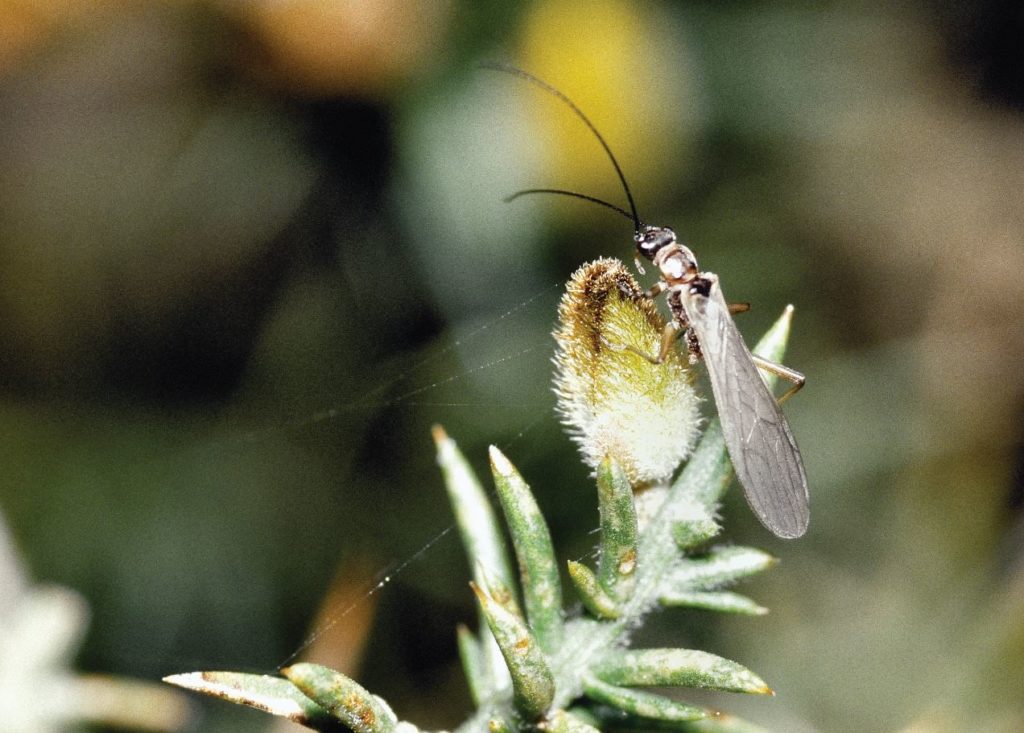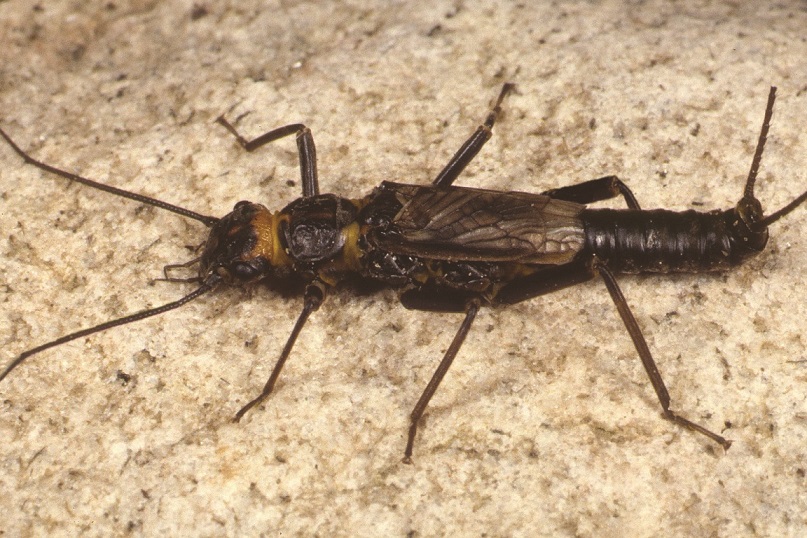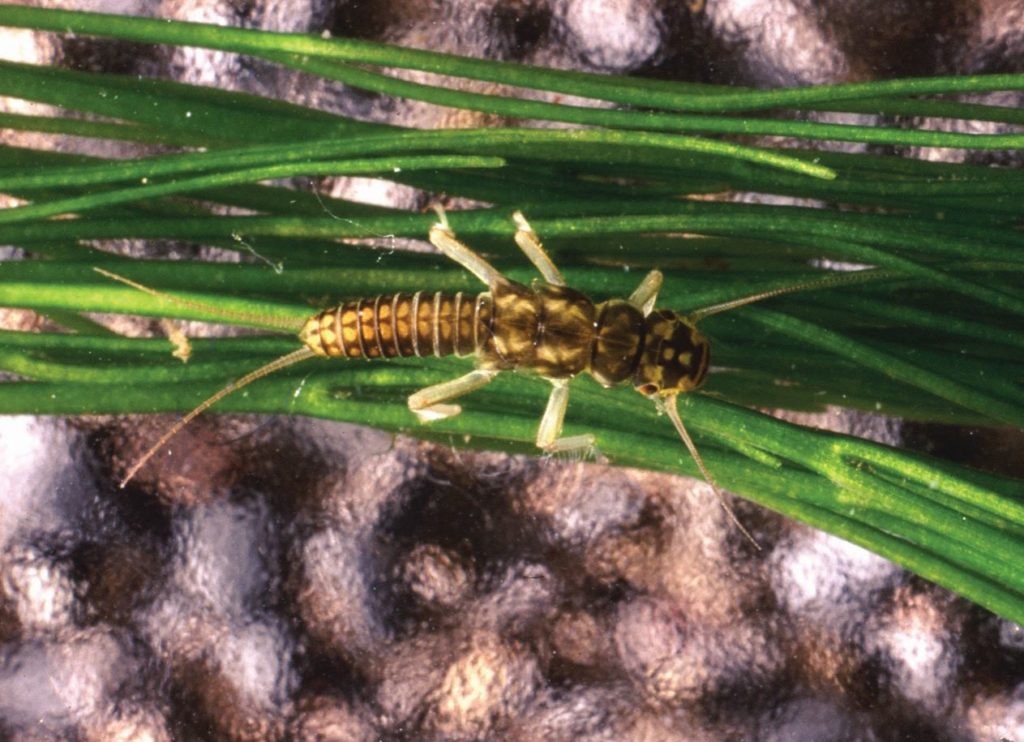Stoneflies
Although the Plecoptera clearly belong in the ‘orthopteroid’ group of orders, they are probably most closely related to the Zoraptera and Embioptera, these three orders sometimes being placed in the superorder Plecopterida. However, they are apparently an early offshoot because their nymphs are always aquatic, unlike the entirely terrestrial nymphs of the other two orders.
The fore wings of stoneflies are narrow, and in several families there are three parallel veins joined by rows of cross-veins, giving a characteristic ladder-like appearance. Although the fore wings are not specially modified as wing-covers all the wings tend to be rather shiny and leathery, giving rise to the anglers’ alternative name of hard-winged flies.
 Nemourid stonefly Credit Robin Williams
Nemourid stonefly Credit Robin WilliamsThe adults sometimes retain the pair of long cerci always seen in the nymphs, but in some families they are lost when the adult emerges. Adults feed very little, if at all, though some species are known to graze on lichens and algae; they are short-lived and are reluctant to fly, often found running around amongst stones and vegetation by the side of rivers.
Their flight is slow and rather erratic, and in some families brachyptery is common, especially at higher altitudes. Stoneflies are generally nocturnal, and males communicate with females by drumming their abdomen on the substrate in a specific pattern of pulses.
 Male brachypterous Diura bicaudata Credit Roger Key
Male brachypterous Diura bicaudata Credit Roger KeyPlecopteran nymphs, known to some anglers as ‘creepers’, are usually confined to fast running water because they require high oxygen concentrations. All are sensitive to organic pollution and the group as a whole is therefore important in water quality assessment. Nymphs are always herbivorous or detrivorous in early life, but in some families the later nymphs become more omnivorous, preying on small invertebrates.
 Yellow Sally nymph Isoperla grammatica Credit Stuart Crofts
Yellow Sally nymph Isoperla grammatica Credit Stuart CroftsMost species are univoltine although the larger species can take two or three years to reach maturity, with up to twenty moults. Worldwide there are around 3,000 known species in 16 families; in Britain there are 34 species in 7 families.
Identification help